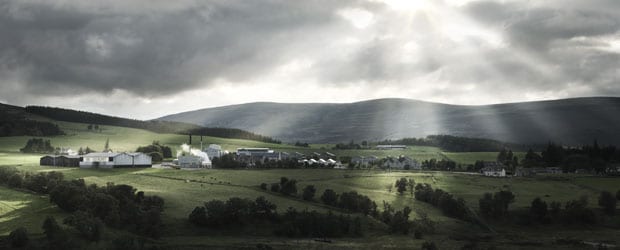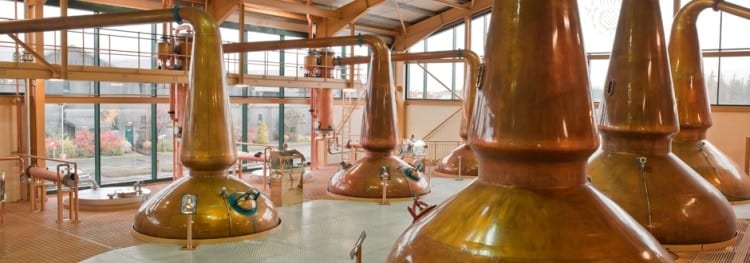The Glenlivet distillery information
In Speyside, along the banks of the river Livet (“The smooth flowing one”), we find the Glenlivet distillery. Established by John Smith in 1825 on the location of a former (illegal) farm distillery called “Upper Drummin”. At the time the Speyside area was riddled with illegal distilleries, and Smith recognized that there was money to be made by going legit. Much to the annoyance and jealousy of his neighbors, Smiths’ decision proved to be right, and he found himself forced to carry a pair of pistols to ward off attempts on his life.
The distillery passed on to his son and heir John Gordon Smith upon his death in 1871. As the new owner, one of his first moves was to trademark Glenlivet, to protect the brand from rivals selling off their inferior spirit as Glenlivet. In 1921, the distillery changed hands once again, to Captain Bill Smith, a second great nephew to John.
In the mid and late 1920s, early 1930s, the whisky industry in Scotland was hit hard. Dwindling sales followed by the depression and the American prohibition saw many distilleries close their doors. At Glenlivet it resulted in a major reduction in production, cutting back from some 330,000 liters in 1929 to a mere 115,000 liters in 1932. In the same year, The Distillers Company Ltd, at that time owners of a great amount of malt and grain distilleries in Scotland, closed down their distilleries for the season of 1932-1933. In all of Scotland, only two single malt distilleries remained opened; The Glenlivet and Glen Grant. When the prohibition in the US ended in 1933, this enabled The Glenlivet to his the ground running. They signed a deal with the Pullman train company, who started selling miniature bottles on their coaches, and by the 1950s, The Glenlivet accounted for roughly half of Scottish whisky being sold in the US.
The Glenlivet whisky
The core line of The Glenlivet consists of the following:
- 12 Year Old; Matured in a mix of European and American oak.
- 15 Year Old – French Oak Reserve; as the name gives away, this whisky is finished in French Oak casks.
- 18 Year Old; Like the 12 Year Old, the 18 Year Old also consists of a mix of European and American oak matured spirits.
- 21 Year Old
- XXV; A batch-produced whisky finished in individually selected ex-sherry butts.
There is also a range of whiskies produced using natural methods, sold under the name of Nadurra (Gaelic for natural):
- Nàdurra 16 Year Old; Non chill filtered, cask strength, and matured in first-fill ex-Bourbon casks.
- Nàdurra 48%; This expression is the same as Nàdurra 16 Year Old, but it has been bottled at a standard cask strength of 48%. Exclusively available in Travel Retail.
Travel Exclusives:
- 12 Year Old first-fill; Matured entirely in first-fill American Oak.
- Nàdurra 48%. This expression is the same as Nàdurra 16 Year Old, but it has been bottled at a standard cask strength of 48%.
- 15 Year Old; Unlike its counterpart in the classic range, The 15 Year Old is not matured in French Oak.
- Master Distiller’s Reserve; Matured in a combination of traditional oak, American oak and first-fill ex-Sherry oak casks.
Distillery info:
| Name | The Glenlivet |
| Region | Speyside |
| Logo |  |
| Status | Active |
| Founded | 1825 |
| Water source | Josie's well / Blairfindy Well |
| Owned by | Pernod Ricard |
| Address |
The Glenlivet Distillery +44(0)1340 821 720 |
| Visitor centre | Yes |
| Website | http://www.theglenlivet.com/ |
| https://twitter.com/TheGlenlivet | |
| https://www.facebook.com/theglenlivet | |
| Community | Guardians of the Glenlivet |
| Map |
Distillery Setup:
Component |
Capacity |
Quantity |
|---|---|---|
| Mash tun | 13.3 tonnes | 1 |
| Washback | 59,100 litres | 16 |
| Wash still | 15,000 litres | 7 |
| Spirit Still | 10,000 litres | 7 |
| Expected yearly output in LPA (Litres of pure alcohol) | 10,500,000 |
Images courtesy of Chivas Brothers / Pernod Ricard

